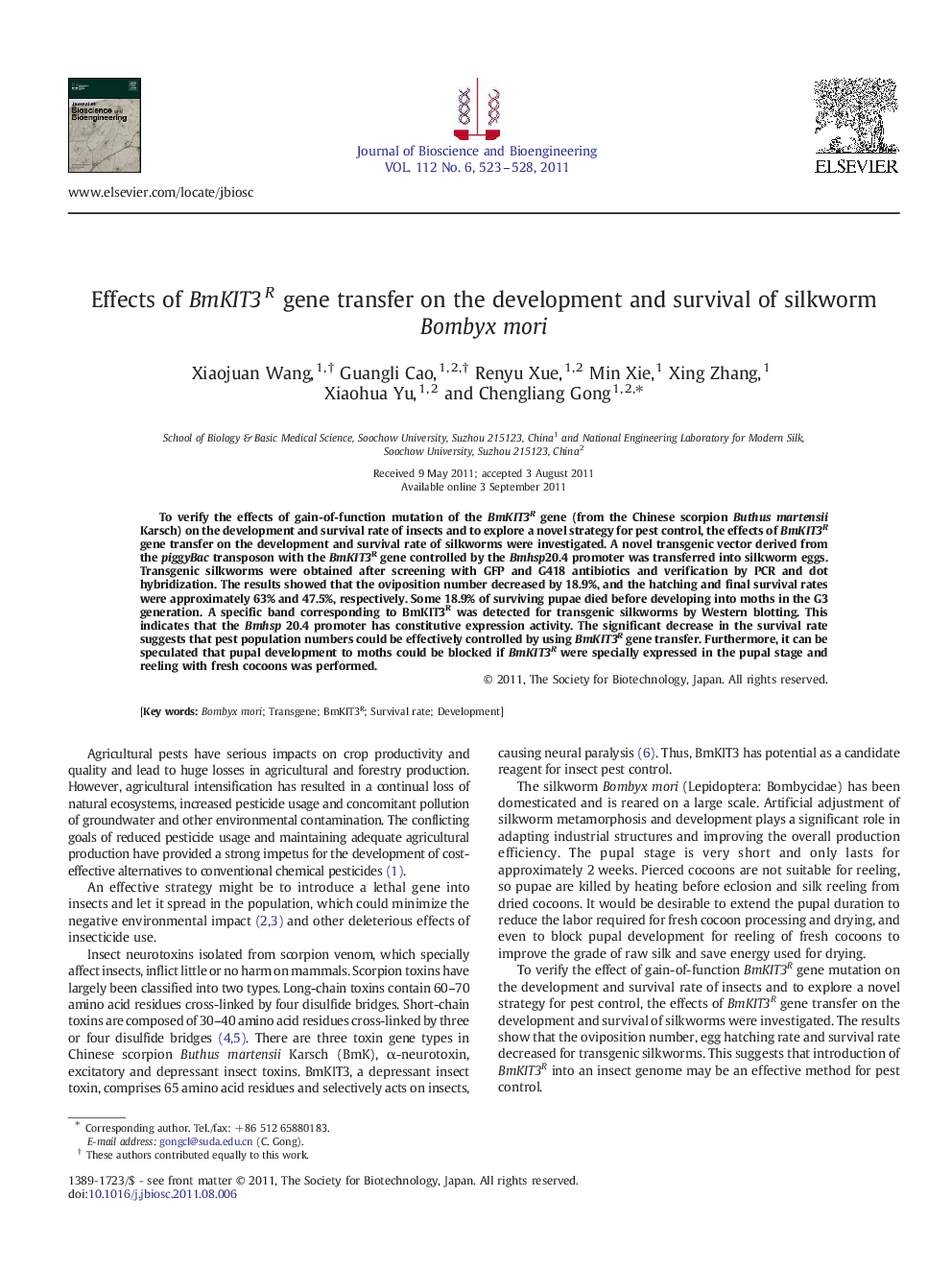| Article ID | Journal | Published Year | Pages | File Type |
|---|---|---|---|---|
| 20926 | Journal of Bioscience and Bioengineering | 2011 | 6 Pages |
To verify the effects of gain-of-function mutation of the BmKIT3R gene (from the Chinese scorpion Buthus martensii Karsch) on the development and survival rate of insects and to explore a novel strategy for pest control, the effects of BmKIT3R gene transfer on the development and survival rate of silkworms were investigated. A novel transgenic vector derived from the piggyBac transposon with the BmKIT3R gene controlled by the Bmhsp20.4 promoter was transferred into silkworm eggs. Transgenic silkworms were obtained after screening with GFP and G418 antibiotics and verification by PCR and dot hybridization. The results showed that the oviposition number decreased by 18.9%, and the hatching and final survival rates were approximately 63% and 47.5%, respectively. Some 18.9% of surviving pupae died before developing into moths in the G3 generation. A specific band corresponding to BmKIT3R was detected for transgenic silkworms by Western blotting. This indicates that the Bmhsp 20.4 promoter has constitutive expression activity. The significant decrease in the survival rate suggests that pest population numbers could be effectively controlled by using BmKIT3R gene transfer. Furthermore, it can be speculated that pupal development to moths could be blocked if BmKIT3R were specially expressed in the pupal stage and reeling with fresh cocoons was performed.
